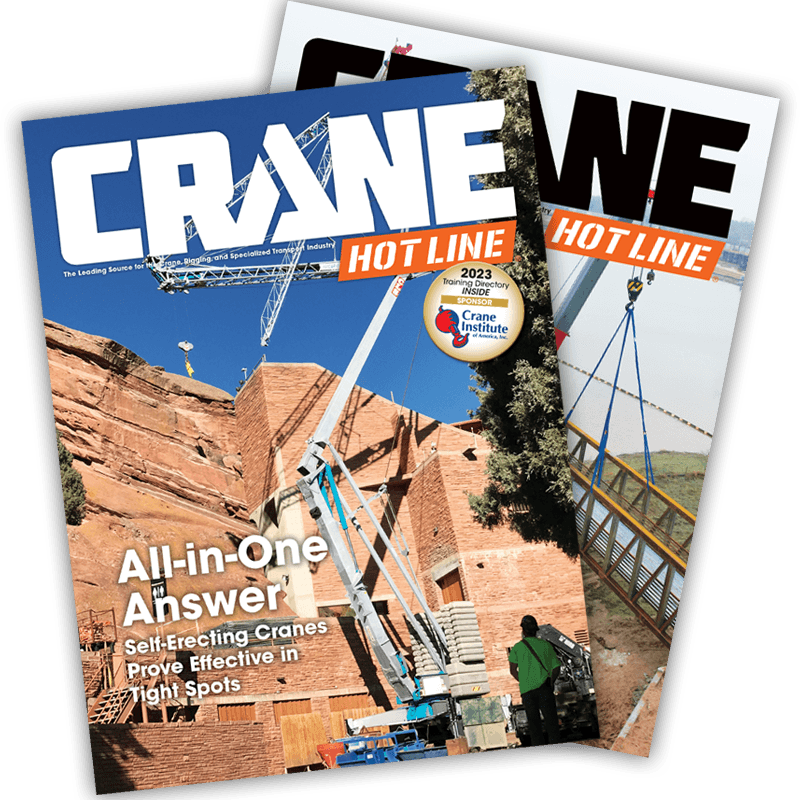Hot Loads, High Stakes
Working safely in the heat of crane operations
Crane operations don’t cool down in the summer and neither does the heat. While the industry races to meet deadlines under wide-open skies, an invisible hazard rises with the temperature: heat stress. And when you’re lifting thousands of pounds with precision equipment, there’s no room for heat-induced error.
Every jobsite deserves more than cones and caution tape. It deserves a comprehensive safety strategy and one that doesn’t just account for what’s on the ground, but also the high-stakes choreography of crane work. Because when you’re up in the cab or signaling below, your ability to focus, react and move safely can quickly evaporate.
Summer Reality
Let’s not sugarcoat it, crane work is physically and mentally demanding even on a mild day. But crank up the mercury to 90-plus degrees, add in 60% humidity, bake in a steel platform and suddenly you’re not just battling gravity but your own body.
Heat stress doesn’t knock politely. It sneaks up with fatigue, dizziness and slowed reaction times. That’s dangerous in any trade, but in crane operations, it can be life-threatening.
Operators up in the cab, often in minimally ventilated environments, are especially vulnerable while spotters and riggers down below contend with radiating asphalt, reflective surfaces and often limited access to shade. And let’s not forget that personal protective equipment, while necessary, may also be sweltering as full gear can trap heat and make it harder for the body to cool down.
Spot the Signs
In all cases, heat illness prevention training should be clear: stop first, assess always. That means everyone on-site, from the operator to the oiler, should know the early warning signs like muscle cramps, headaches, lightheadedness, confusion, nausea and irritability. The moment any of these show up, it’s not “tough it out,” it’s “time out.”
Too many workers ignore those early signs and risk collapsing on the job. That can’t happen 30 feet in the air or beside a suspended load. It’s why we say: If it feels off, shut it down. Safety isn’t a delay. In fact, it’s the best way to protect your progress.
Engineering Heat Safety
Certainly, hydration and shade matter. But that should be the bare minimum for crane crews. Heat safety has to be engineered into the work plan, just like the lift schedule. Here’s what that looks like:
- Rotated Responsibilities: Don’t keep the same spotter in direct sun for four hours. Rotate in shifts.
- Scheduled Downtime: Build heat breaks into the project timeline, not just “if we have time.”
- Cool Zones On-Site: Measures like portable fans, misting stations and shaded tents might go overlooked in initial estimates, until an emergency makes them a budgeting priority.
- Hydration Monitoring: Assign a designated crew member to monitor hydration and ensure all team members are taking regular opportunities to drink fluids (i.e., water) and stay properly hydrated throughout the workday.
- Jobsite Monitoring: Use weather alerts and heat index tracking to trigger safety level changes, meaning that when the index hits certain thresholds, work methods adjust accordingly.
Risk Multiplier
It’s widely understood that heat-related fatigue affects judgment. And in crane operations, that split-second hesitation or misread signal can lead to dropped loads and swing hazards.
Heat also compromises grip strength that’s crucial when handling rigging or controls. Sweaty hands, slippery gloves and reduced dexterity are a recipe for mishaps.
There’s also the machinery to consider. High temps can naturally affect hydraulic performance, sensor accuracy and steel expansion for example. Equipment checks must be more frequent with operators reporting even minor irregularities.
Train for Terrain
Keep in mind that new hires or operators arriving from cooler climates might not be acclimatized to sun-scorched jobsites. And bodies that aren’t used to the heat may not recognize the danger signs until it’s too late.
That’s why every project should include acclimatization protocols like easing new team members into full workloads, monitoring them closely and even providing buddy systems. Because nobody should be left to “figure it out” when their health is on the line.
Also worth noting is that certain medications, underlying health issues and even diet (too much caffeine or salty food) can elevate the risk of heat stress. Site leaders should be aware of these, and crews should feel empowered to speak up.
Leadership Imperative
Project managers and equipment coordinators must control the culture. If your team sees you cutting corners or shrugging off summer safety, they’ll follow your lead.
However, if you’re enforcing cool-down breaks, praising proactive reporting and investing in comfort infrastructure, that sets the tone that people’s safety is priority one.
The sun’s not the enemy, but ignoring its effects is. Crane operations require maximum precision, constant communication and peak mental focus. Heat undermines all three.
Don’t leave safety in the shade this summer. Build smarter by protecting even better.
--
Michelle Marsh is the Senior Vice President of Environmental, Health and Safety (EHS) at AWP Safety, a traffic safety company with over 1 million work zones secured annually.



